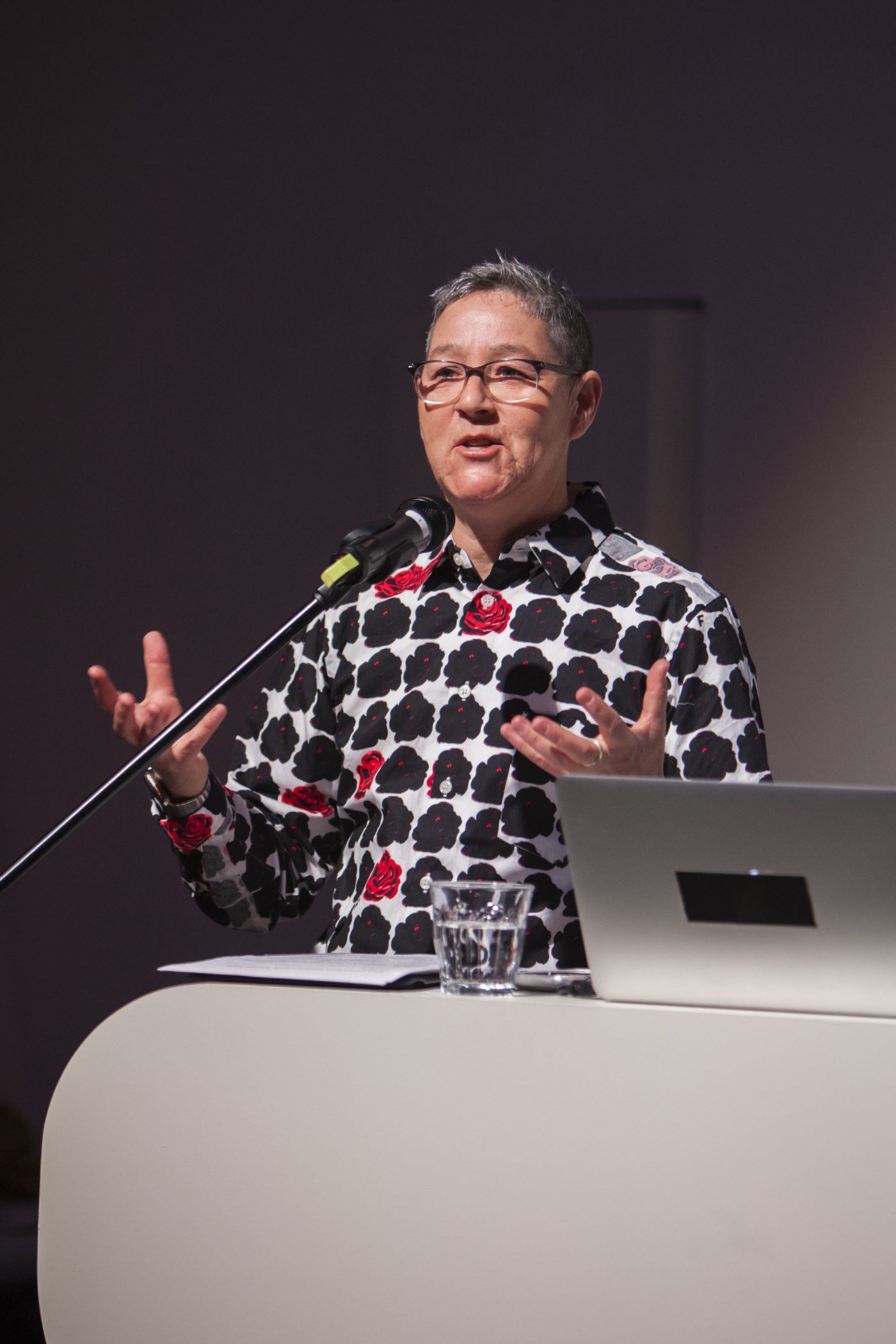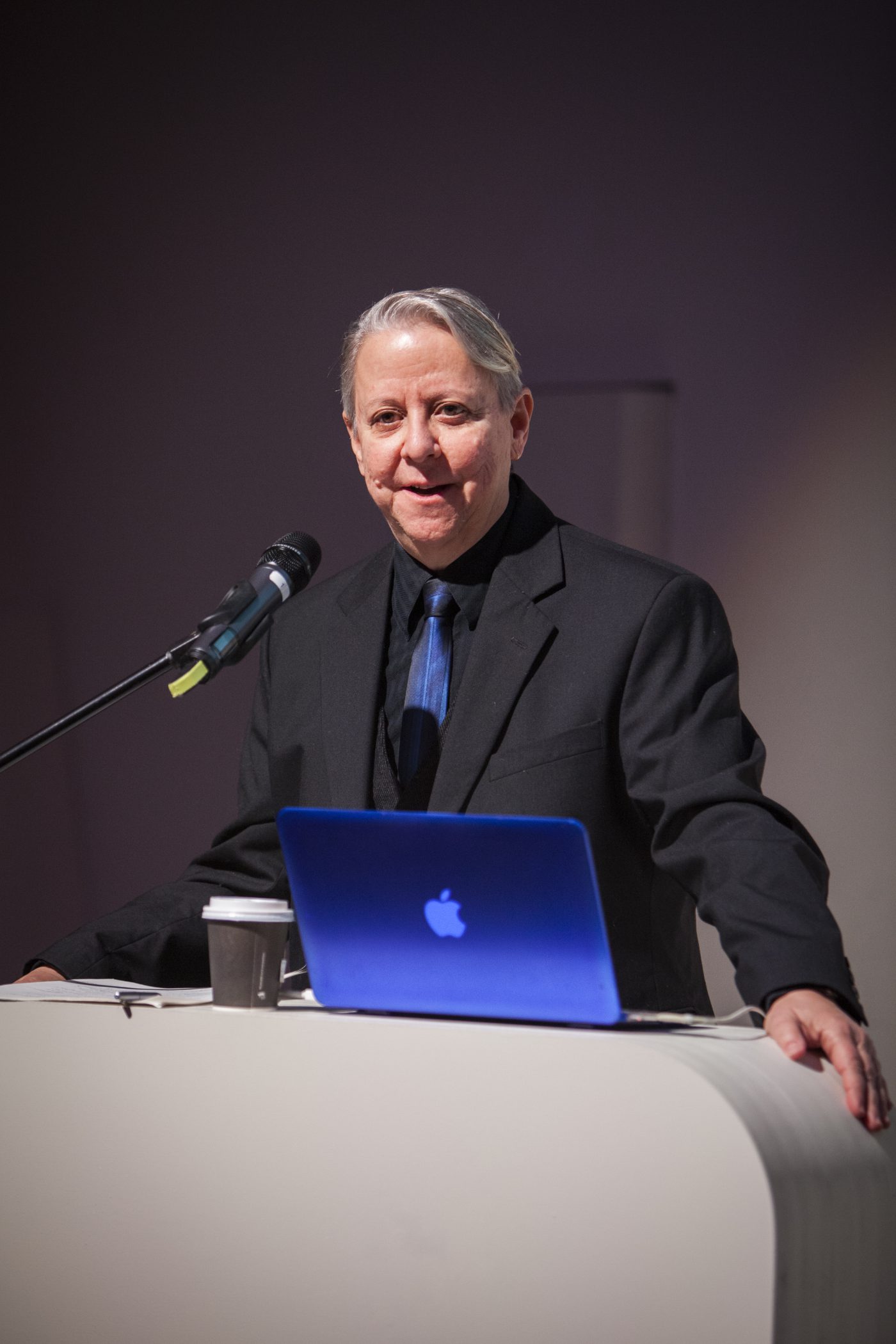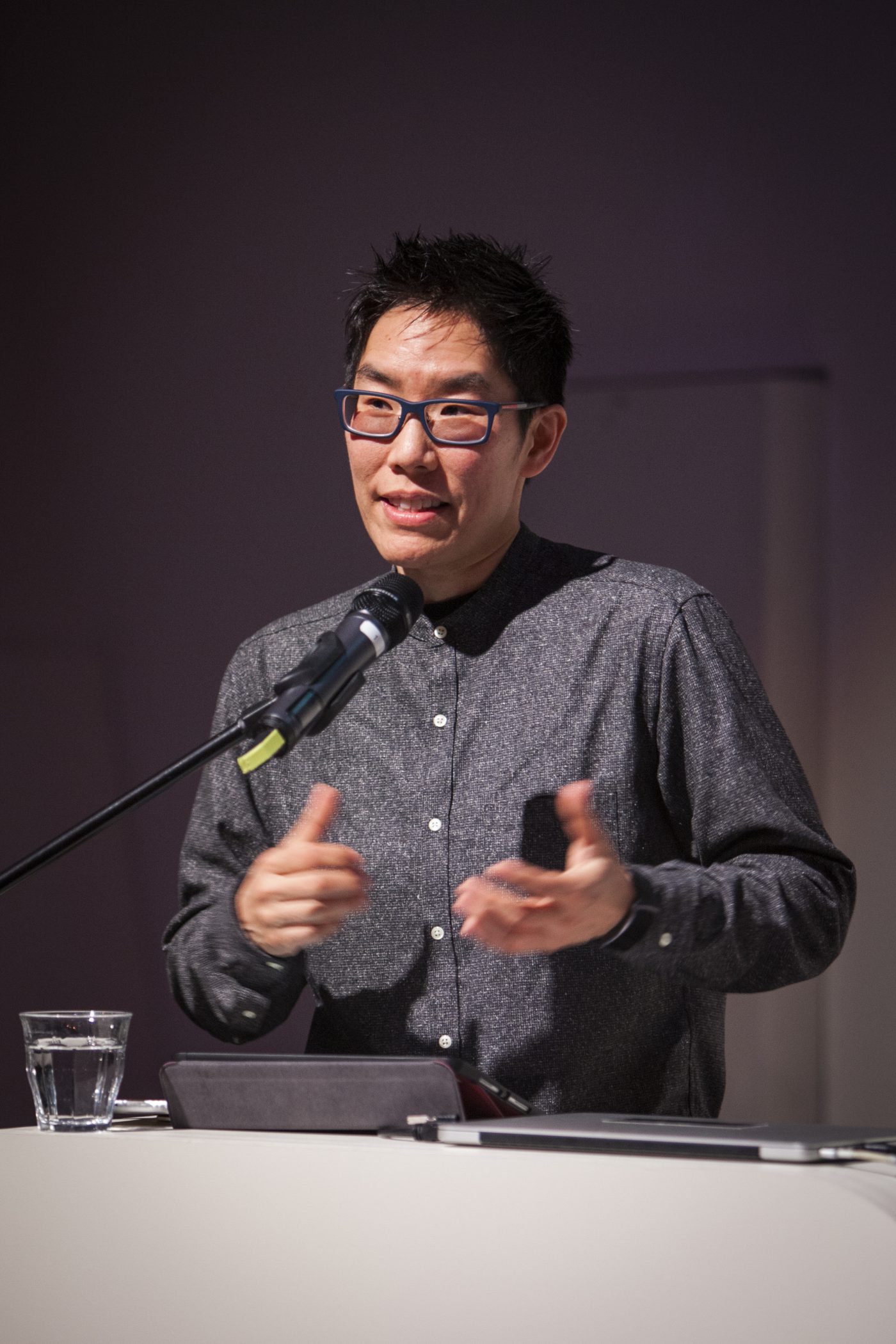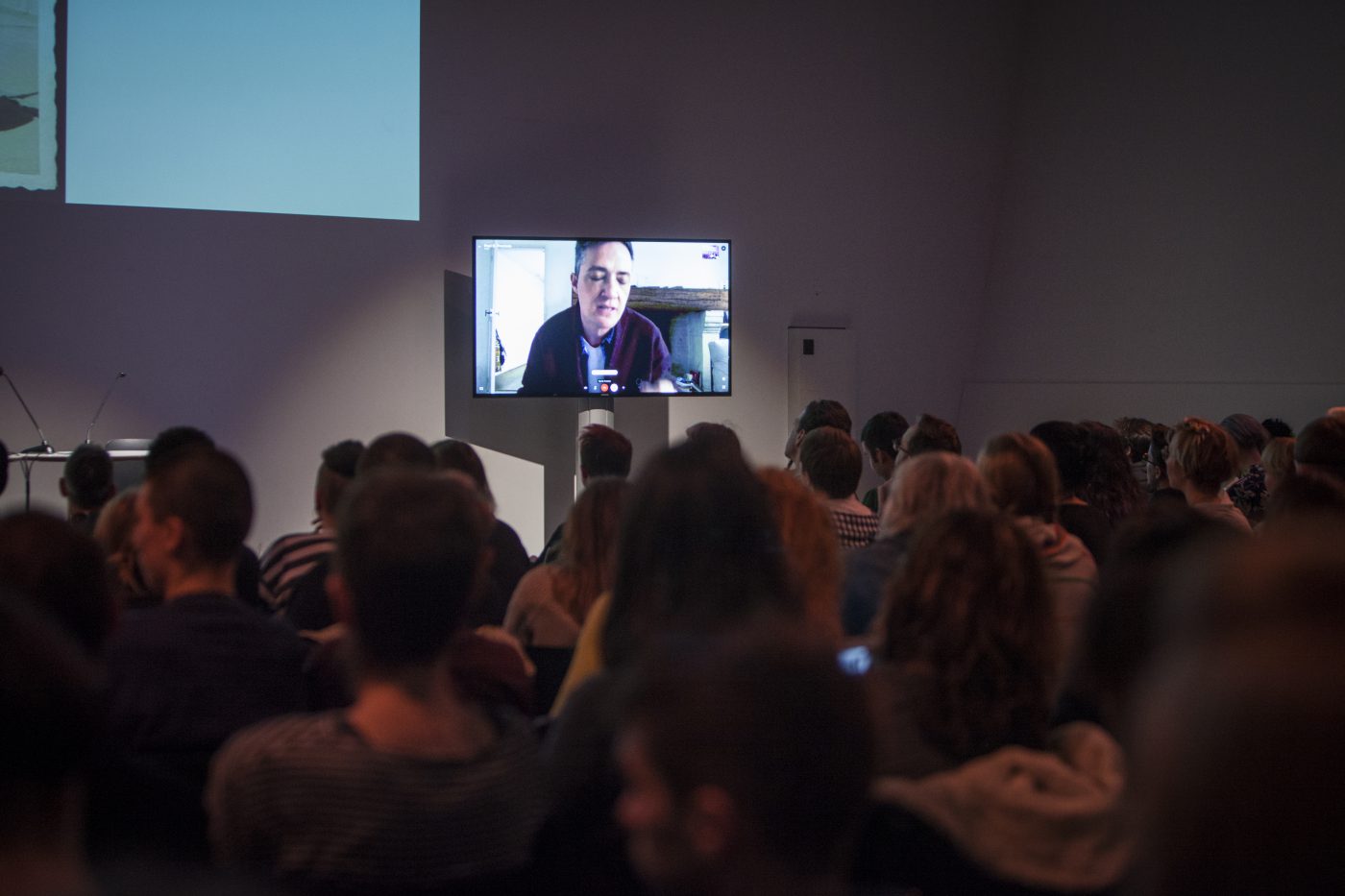
boychild
On Touch – Queer electrons and feeling philosophy
The auditorium of the Stedelijk Museum Amsterdam filled with artistic fashion victims from the Rietveld Academie and other fans of one of the trendiest currencies in philosophy, thought and art practices today: the branch which includes queer, transgender, gender and women’s studies, feminist theory and the like. It is the final day of Hold Me Now, the conference-festival organized by Studium Generale Rietveld Academie on how the haptic is thought and experienced in art, philosophy, politics, life and theory. Guest curators such as Rizvana Bradley, Karen Archey and Mark Paterson developed one-day programs based on aspects of the haptic; meaning any form of interaction that involves touch. The final day was curated by Jack Halberstam, professor of Gender Studies and English at Columbia University, and focused mainly on queer and trans subjectivity, whose body is inextricably connected to desire, limits, needs and potential. At the centre of the program is the haptic body, a body that creates, crafts and unravels.

Jack Halberstam
Theories of desire, the erotic, making and unmaking, the politics of the handmade, and the fray, are subjects that come to the fore in this final day conference line-up with academic superstars such as Julia Bryan-Wilson, Paul B. Preciado and of course Karen Barad. If you don’t mention the latter in your work or at least be inspired by her, you’re considered a nobody these days in the art world and in the humanities. The speakers introduce different forms of embodiment; bodies of variability, wrongness and rightness of the body, and the body as being out of time and space. Instead of claiming rights or providing diagnostic ways of looking at the body, this final day turns to the haptic as a different grammar of embodiment in three frameworks: haptic (other ways of knowing); anarchitecture (forms of unmaking); and bewilderment (getting lost in pathless places).
The first speaker, Julia Bryan-Wilson of UC Berkley, spoke about artist Rebecca Belmore and specifically about her work Biinjiya’iing Onji (From inside) that was shown at the previous Documenta in Athens as a counter-monument. The marble tent which looked out over the Acropolis, invites, according to Belmore, touch and has a sensorial shape. The agency of the material, marble, was recognized, and helped to create alternative histories. However, critics claimed it was not humble enough, partially because of the monumentality of the material and its overly spectacularization of the refugee crisis. If an artist doesn’t provide a clear script, it becomes problematic for the critic. Bryan-Wilson situates Belmore and her work among some of her colleagues like Emily Jacir, and concludes that the material speaks back to ideological formations and harbors multiple temporalities. It is a weirdly refreshing presentation; a solid art-historical lecture in the midst of presentations revolving around often vaguely defined terms.

Karen Barad
Karen Barad’s presentation, one of the hottest names in queer philosophy, talks about the haptic through quantum field theory in a series of short vignettes, such as violence and exotics, and structures of nothingness. As a listener, you need to pay close attention since not everyone is blessed with extensive knowledge of physics or let alone the easy comprehension of it. So I will provide some fragments of Barad’s thought. It is hard to pin down an exact core of her quantum poetry, in which she goes in and out of matter. She introduces the idea that in quantum field theory, touch does not really exist. What you feel is merely a sensation of electromagnetic repulsion, since two electrons cannot directly touch. This repulsion is at the centre of attraction, a cutting together apart, a deconstruction of identity. In quantum field theory, particles are entangles in the void, which is an ontological insensibility. Indeterminacy is the womb of all that is in the void, where particles can be born and can die. Virtual particles are quantized indeterminacies in action, a ghostly non-existence in a vacuum full of indeterminacies. The electrons are interacting with these virtual protons, who are touching themselves and the other. There is an infinite set of possibilities of these interactions which means there is a virtual exploration of possibilities, which entails particles touching itself, and touching other particles to the infinite. Every level of touch is touched by all possible others.
In quantum field theory, touch does not really exist: what you feel is merely a sensation of electromagnetic repulsion
Self-interaction means the transition of one particle to another in a radical undoing of time: radical queer trans-formations. Matter is an involution that cannot help touching itself and in doing so it comes into contact with the infinite alterity within the self. The electron absorbs its own self; it is a perversion of the theory, a moral violation, which is ‘renormalized’, to speak in the vocabulary normally used by quantum physicists. Not making the wrong right, but the undoing of normativity, where self-touching the other is a perversity of quantum field theory. The electron is forever transitioning, recreating and undoing itself, as a “transmaterial performativity,” the same way queers are transforming and renormalized over and over again. Barad claims that this is conceptually queer theory. Does this make sense? I hope so. Is her queer explanation of quantum field theory a bit farfetched? Maybe. Does it tickle the brain? Absolutely.

Mel Y. Chen

Paul B. Preciado on Skype
Perhaps slightly related to Barad’s electromagnetic repulsion is Mel Y. Chen’s talk on forms and modes of embodiment of agitation, which is connected to disability and race, history and violence. Chen uses the concept of agitation to touch on some deeper issues relating to diagnosis, illness, politics, and how race, visibility and performance can work together, to see where agitation can become a form of conduct and living.
How many more (disabled) transgender artists does history hide from us?
One of the most fascinating lectures came from Paul B. Preciado on Lorenza; a German-Chilean trans artist who lost both her arms as a kid and instead uses her mouth and feet to make art. Her touching and remarkable story shows a reconstruction of normality, using her body, undoing the hands and her fight between different regimes of visibility in which she is caught. But in any case, she claims the right to exist in public. Paul rightly points to the question of how many Lorenza’s have or do exist? How many more (disabled) transgender artists does history hide from us? That is why these moments of reconstruction are so important.
The conference was closed by a dance performance/conversation by boychild, a movement-based performance artist. In changing light, boychild answers questions from the audience through movement; forced and controlled, at times through bodily agitation and sometimes through letting go: the performance is a switch of dance and conversation. At the end of the performance, the audience had the opportunity to ask non-verbal questions, leading to short interpretive dances and movements. The final request came from boychild, asking the audience to dance when leaving the auditorium, and so we did. I think that is the best way to end a conference on the haptic, touch and the body.

boychild
The speakers made us look differently to touch, the body and the haptic. They were seen through a different lens; a queer, erotic, quantum trans-lens perhaps. To take the example of the fray, one of the metaphors that stuck with me the most: throughout the conference we travelled like the thread in the fabric, in and out, and the topics discussed are simultaneously at the edge and part of the centre, like Lorenza for example. But what kind of left me in the vacuum, to speak in Barad’s terms, were some concepts that were ill- or not defined, such as the concept of queer. It is a bit like the vacuum: we know something is there, but not exactly what. But I guess this fits the frame of bewilderment, of getting lost in a forest of electrons, touching themselves and you and through it acquiring new forms of thought and knowledge. But be aware of the cliff, because the fray might end in the nothingness of self-referential academic jargon.
Hold Me Now, 21, 22, 23 and 24 March 2018, Stedelijk Museum Amsterdam
Corine van Emmerik
is art historian


